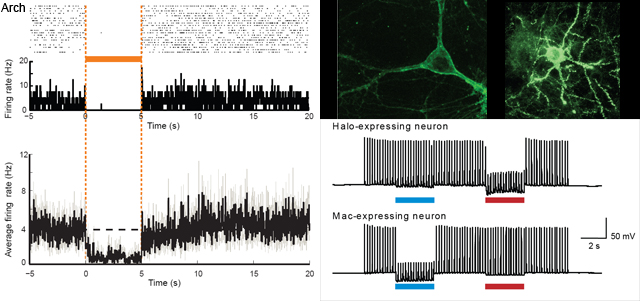
The ability to silence the activity of genetically specified neurons in a temporally precise fashion would provide the opportunity to investigate the causal role of specific cell classes in neural computations, behaviours and pathologies. Here we show that members of the class of light-driven outward proton pumps can mediate powerful, safe, multiple-colour silencing of neural activity. The gene archaerhodopsin-3 (Arch) from Halorubrum sodomense enables near-100% silencing of neurons in the awake brain when virally expressed in the mouse cortex and illuminated with yellow light. Arch mediates currents of several hundred picoamps at low light powers, and supports neural silencing currents approaching 900 pA at light powers easily achievable in vivo. Furthermore, Arch spontaneously recovers from light-dependent inactivation, unlike light-driven chloride pumps that enter long-lasting inactive states in response to light. These properties of Arch are appropriate to mediate the optical silencing of significant brain volumes over behaviourally relevant timescales. Arch function in neurons is well tolerated because pH excursions created by Arch illumination are minimized by self-limiting mechanisms to levels comparable to those mediated by channelrhodopsins or natural spike firing. To highlight how proton pump ecological and genomic diversity may support new innovation, we show that the blue–green light-drivable proton pump from the fungus Leptosphaeria maculans (Mac) can, when expressed in neurons, enable neural silencing by blue light, thus enabling alongside other developed reagents the potential for independent silencing of two neural populations by blue versus red light. Light-driven proton pumps thus represent a high-performance and extremely versatile class of ‘optogenetic’ voltage and ion modulator, which will broadly enable new neuroscientific, biological, neurological and psychiatric investigations.
